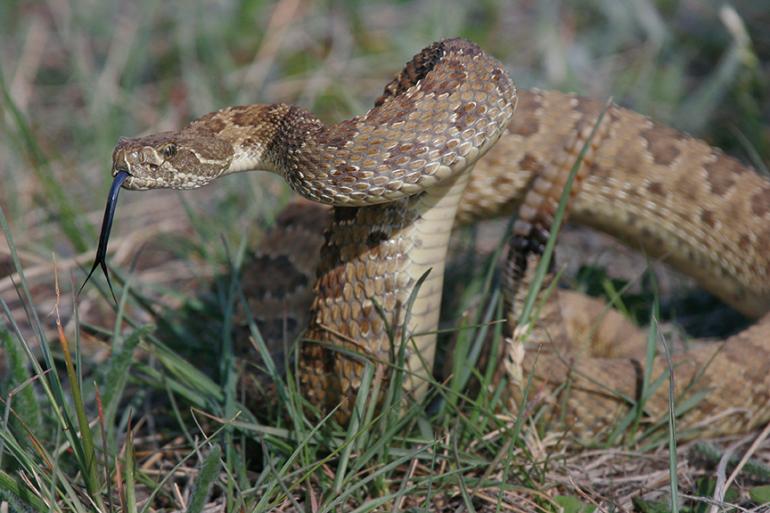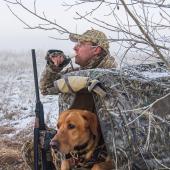Serpent in the Garden
Avoiding rattlers in southwest Montana.
If you have pets in Montana, there’s one type of snake you have to worry about, and that’s the western or prairie rattlesnake. While this is a relatively docile species, snakebites happen, generally because of habitat crossover where people recreate or live in snake territory. Minimize your animal’s exposure to snakes by adhering to the following tips.
Prevention
If you live in or commonly recreate in snake territory, consider snake-training your pet with the assistance of a professional. Each time entering snake country, identify the nearest veterinary hospital equipped to handle snakebites. There is a rattlesnake vaccine available. There is no conclusive evidence as to how effective it is against the prairie rattlesnake. It is venom-specific—created for the western diamondback—and there is some thought that it may minimize side effects of a bite. (Note: Urgent veterinary care is still recommended, even in an animal that’s been vaccinated.)
Avoidance
Beware of your surroundings. Due to the rattler’s docile nature, if you watch where you’re going, you can avoid most encounters. As an added precaution, keep your pets on-leash or very close to you while in snake country.
Beware of snake habitat. Keep to an established trail where possible. Snakes tend to be in rocky areas near water and prairie lands. Avoid letting your pet dig under rocks or logs. Avoid tall, grassy areas when possible. Don’t approach snakes or allow your animals to approach them. If you hear a snake rattling, try to visually locate it and leave the area.
Rattlesnakes are nocturnal. They’re most active at night, dawn, and dusk during the summer months. During the extreme heat of the day, they’re likely hiding in shady places and rarely encountered.
Once Bitten
If your animal has been bitten by a rattlesnake, the first thing to do is minimize anything that would increase its heart rate. Carry the animal if possible. If not, walk slowly to the car. Keep the affected area below heart level if possible. Snakebites are most common to the face, but can occur on the legs or chest as well. Try to keep the animal as calm and quiet as possible during transport. Drive to the nearest emergency veterinary hospital. The faster you can administer appropriate treatment, the better your pet will do. This is the MOST IMPORTANT thing to remember in the event of a bite. Timing is everything. A veterinarian will assess the location of the bite and the severity of your animal’s condition to determine the best treatment option. Each snakebite is a unique situation. Some bites may not have any venom (a.k.a., dry bites). Other bites from young snakes can contain much more venom than expected. A bite closer to the heart will be much more devastating than a bite to the face. Treatment options may include anti-venom, intravenous fluids, pain medication, and potentially, antibiotics. Options vary depending on the size of the patient, the amount of venom suspected from the bite, location of the bite, and stability of the patient.
Definite Do-Nots
Do NOT panic. Your animal will sense your stress and react to it. Stress increases the pet’s heart rate, thus allowing the venom in the bloodstream to travel through the body faster.
Do NOT attempt to place a tourniquet on the area.
Do NOT attempt to suck the venom from the bite.
Do NOT delay treatment because your pet seems to be fine or you think you are too far from a hospital. Symptoms can quickly become life-threatening.
Loni Odenbeck is co-owner of 360 Pet Medical in Bozeman. She has been a small-animal veterinarian in the area since 2007.













